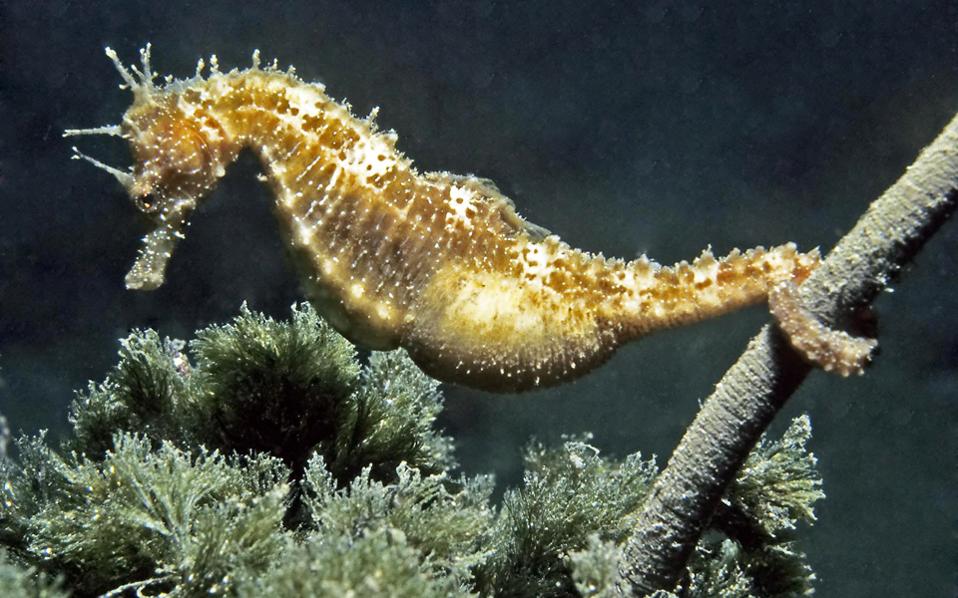Alarm bells ring for seahorses

Populations of seahorses and pipefishes are under threat in the Mediterranean, according to data released by the International Union for Conservation of Nature (IUCN). The IUCN estimates that if the degradation of their habitats continues – along with the damage caused by overfishing – then at least 15 percent of seahorse species in the region will face the serious risk of extinction. As it is, scientific knowledge about seahorses is limited.
A few days ago, the IUCN said that the first signs of a drop in the number of seahorses, to which pipefishes are closely related (they both belong to the Syngnathidae family), are now visible. The organization whose Red List details the global conservation status of biological species ranked Mediterranean seahorses and pipefishes as “near threatened,” one step away from being classified as endangered. “More than half of the seahorses and pipefishes found in the Mediterranean Sea (seven species) are currently considered Data Deficient because there is insufficient information available to assess their extinction risk and further research is needed to understand their distribution, population trends and threats,” the group’s report said.
According to the report, seahorses and pipefishes are mainly threatened by habitat loss and degradation caused by coastal development and destructive fishing practices such as trawling and dredging.
“Seahorses are not targeted by the fishing industry but often end up as bycatch or succumb to oceanic pollution,” says Costas Dounas, research director at the Institute of Marine Biology, Biotechnology and Aquaculture, a part of the Hellenic Center for Marine Research (HCMR). “There have not been systematic studies in Greece, but it is clear that their populations have thinned. It is a species with great variability – they can adopt the color of the habitat they are in – so if there is not a targeted research effort, it’s hard to spot them.”
One of the few known examples of seahorse colonies in Greece can be found off Stratoni, in Halkidiki. The HCMR has initiated actions for this population to be studied. Two species of seahorses can be found in Greece’s waters, Hippocampus hippocampus and Hippocampus guttulatus, whose populations are estimated to have decreased by 20-30 percent and which are protected under the Convention on International Trade in Endangered Species of Wild Fauna and Flora and the Barcelona Convention.
A few Mediterranean countries, such as Slovenia, protect seahorses in their national legislation.





